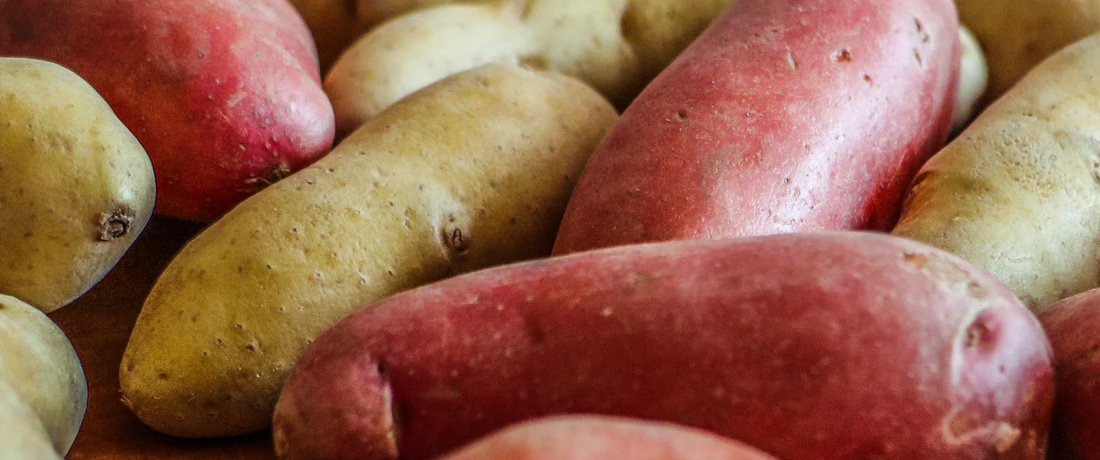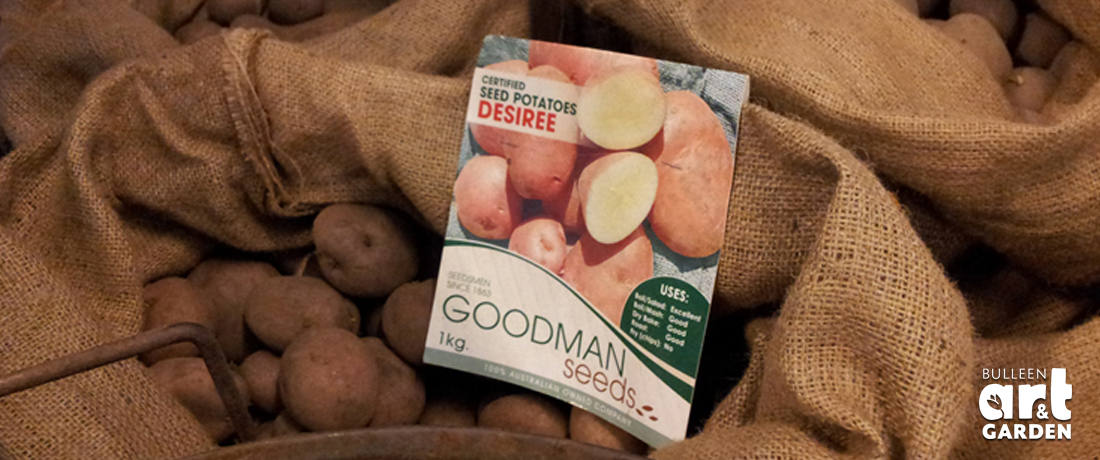
 Important note about plant availability. Important note about plant availability.There are hundreds of factsheets on our website provided for your information. Not all plants will be available at all times throughout the year. To confirm availability please call (03) 8850 3030 and ask for the nursery. |
Potatoes have been a staple in our diet for hundreds of years. Growing them is easy, so why not start thinking about producing your own home grown potatoes. For those who love their spuds, you’ll love the variety of seed potatoes we now have available at BAAG. They come both packaged and loose and we stock a large range of popular varieties as well as many unusual, designer spuds like Lustre or King Edward.
There’s still plenty of time to plant, so get ready by preparing their beds for planting with loads of well-rotted manures and composts. Potatoes are hungry plants, so you can’t overdo it. Seed potatoes refer to the fact that they are disease-free. They still look like ordinary potatoes, not seeds! You can’t guarantee that the spuds that have started to sprout in your pantry aren’t carrying viruses, so sometimes planting those will lead to disappointment. Read on for more information on planting and available varieties.
Position
Potatoes love a sunny, well drained position in your garden. They should be planted when the potatoes start to shoot and the last frost has occurred. In Melbourne, this is generally from August to September. Potatoes can be left to sprout before planting by leaving them in a well lit, cool, dry place.

Preparation and Planting
Seed potatoes can be planted from late winter to mid-spring. The soil needs to be well draining and not have had potatoes growing in that same position for a few seasons. Organic matter such as manure and compost should be added to the soil as this helps with water retention. Blood & Bone and Potash are also favourites of potatoes.
Seed potatoes should be planted 10cm deep and approximately 30-35cm apart, with rows 60cm apart. Avoid using any old potato that has sprouted in your pantry as they may introduce diseases to your soil. Instead, buy certified seed potatoes as you can be sure that they are suitable. Seed potatoes can be cut into several pieces before planting each one up individually… just make sure that each section has a sprouting eye on it. Allow the cut potato to dry out before planting (and maybe even start sprouting) by keeping it in a dark, warm place.
Watering and Hilling
Adequate water is needed for potatoes to form but do not add too much as to make the soil soggy. Do not use untreated grey water on potatoes as the water will be in direct contact with the newly forming tubers. As the potatoes grow, mound (hill) up the soil around them and mulch up to the stem so as the baby potatoes aren’t exposed to the sunlight. Sun causes potatoes to become green and toxic.
Another method of growing potatoes is in old tyres, garbage bins or cylinders made from chicken wire and stakes. The same principles apply: just keep covering the potatoes as they grow with straw and manure.
Harvesting
Potatoes are ready to be dug up when the tops of the plants wither and become yellow. Potatoes should then be stored in a dark, well-ventilated spot. One seed potato on average produces approximately 10 potatoes.

